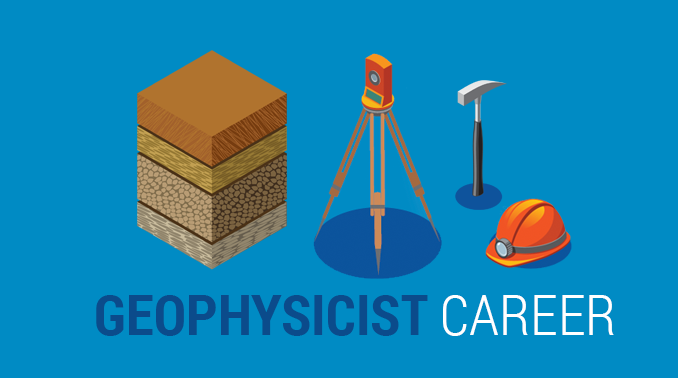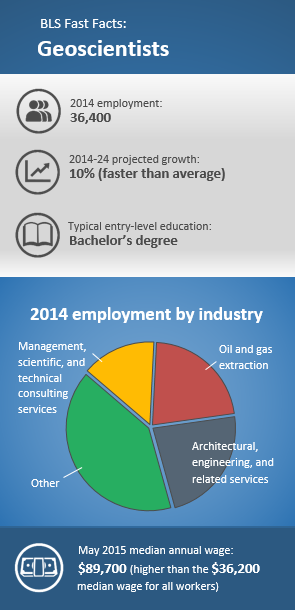All Categories
Featured
Table of Contents
- – Integrated Geophysical Surveys For The Safety...
- – What Is The Best Degree Path For Becoming A ...
- – How To Become A Geophysicist in Greenmount O...
- – Geophysical Survey Definition in Mount Clar...
- – What Does A Geoscientist Do? in Viveash WA ...
- – Geophysical Survey in Beckenham Oz 2022
- – Careers In Geology And Geophysics in Frema...
- – Hydrographic And Geophysical Surveys in Qu...
- – How To Become A Geophysicist in Middle Swa...
- – Geophysical Exploration in Brigadoon Austr...
Integrated Geophysical Surveys For The Safety in South Lake Western Australia 2021
What is the task description of a Geophysicist? What are the responsibilities and obligations of a Geophysicist? What does a Geophysicist do? A geophysicist research studies physical elements of the earth and uses complicated equipment to collect data on earthquakes and seismic waves, which move through and around the earth. The very best markets for geophysicists are the mining and oil industries, as they play a big part in the acquisition of natural deposits.
This Geophysicist job description example includes the list of essential Geophysicist responsibilities and obligations as revealed listed below. It can be modified to fit the specific Geophysicist profile you're trying to fill as an employer or job applicant.
Career chances vary widely across a variety of fields consisting of geophysical data, climate modelling, engineering geology, hydrology, mining, ecological consulting, natural resources exploration, farming, and others. There are many profession paths that can combine your scholastic backgrounds, abilities, and experience with your different interests. Check out through the task titles listed below for ideas.
What Is The Best Degree Path For Becoming A Geophysicist? in Hazelmere Western Australia 2023
Go to the National Occupational Classification website to research basic requirements and responsibilities of tasks in your field.
Geophysics plays in essential role in lots of elements of civil engineering, petroleum engineering, mechanical engineering, and mining engineering, along with mathematics, physics, geology, chemistry, hydrology, and computer technology. Students in other majors might think about a small in geophysical engineering. The core courses needed for a minor are: GPGN229, Mathematical Geophysics (3.
0 credits) GPGN329, Physics of the Earth II (3. 0 credits) Trainees might please the remaining 5 hours with a combination of other geophysics courses, as well as courses in geology, mathematics, or computer science, depending on the trainee's significant.
How To Become A Geophysicist in Greenmount Oz 2020

The wage level of geophysicists can differ depending on aspects such as their level of education, their level of experience, where they work, and numerous others. According to the 2018 Alberta Wage and Income Study, Albertans operating in the occupational group earn an average wage of per year. According to Work, BC (the Province of British Columbia), the yearly provincial mean wage of B.C.

Geophysicists can work both inside your home, in a workplace or lab environment, or outdoors while performing fieldwork. Fieldwork can involve being exposed to a variety of weather condition conditions, and possibly dangerous scenarios, depending upon their location of specialization of the geophysicist. Some geophysicists might likewise spend long durations of time working in little teams in remote locations.
When performing fieldwork, the working hours of geophysicists can be long and consist of evenings, weekends and vacations. To end up being a qualified geophysicist, you require to posses a specific set of abilities and characteristic. These abilities and qualities will allow you to effectively perform the tasks of your task, along with keep a favorable mindset towards your work.
Geophysical Survey Definition in Mount Claremont Western Australia 2020
Institution of higher learnings Federal, provincial/state federal government departments Oil, gas and mining business Non-profit organizations Geological and geophysical consulting business Public and private research organizations Our task board below has "Geophysicist" postings in Canada, the United States, the United Kingdom and Australia, when available:.
Our data shows that the highest pay for a Geophysicist is $165k/ year Our data suggests that the most affordable spend for a Geophysicist is $55k/ year Increasing your pay as a Geophysicist is possible in various methods. Change of company: Think about a profession move to a new company that wants to pay higher for your skills.
Managing Experience: If you are a Geophysicist that oversees more junior Geophysicists, this experience can increase the probability to earn more.
What Does A Geoscientist Do? in Viveash WA 2021
Physics of the Earth and its vicinity Age of the sea floor. Much of the dating info comes from magnetic anomalies. Geophysics () is a subject of natural science interested in the physical processes and physical residential or commercial properties of the Earth and its surrounding area environment, and making use of quantitative approaches for their analysis.
The term geophysics classically describes strong earth applications: Earth's shape; its gravitational, magnetic fields, and electromagnetic fields; its internal structure and composition; its dynamics and their surface area expression in plate tectonics, the generation of magmas, volcanism and rock formation. Modern geophysics companies and pure scientists use a wider definition that includes the water cycle consisting of snow and ice; fluid dynamics of the oceans and the environment; electricity and magnetism in the ionosphere and magnetosphere and solar-terrestrial physics; and comparable problems related to the Moon and other planets. Geophysics is used to societal requirements, such as mineral resources, mitigation of natural hazards and environmental management. In expedition geophysics, geophysical survey data are used to examine possible petroleum tanks and mineral deposits, locate groundwater, find historical antiques, figure out the density of glaciers and soils, and assess sites for ecological remediation. , which consists of other planetary bodies.
The gravitational pull of the Moon and Sun triggers 2 high tides and 2 low tides every lunar day, or every 24 hr and 50 minutes. For that reason, there is a space of 12 hours and 25 minutes in between every high tide and in between every low tide. Gravitational forces make rocks push down on much deeper rocks, increasing their density as the depth boosts.
Geophysical Survey in Beckenham Oz 2022
The geoid would be the international mean sea level if the oceans were in stability and might be extended through the continents (such as with really narrow canals).
The primary sources of heat are the primordial heat and radioactivity, although there are likewise contributions from stage transitions. Heat is mostly brought to the surface area by thermal convection, although there are 2 thermal limit layers the coremantle border and the lithosphere in which heat is transported by conduction. Some heat is carried up from the bottom of the mantle by mantle plumes. If the waves originate from a localized source such as an earthquake or explosion, measurements at more than one area can be used to find the source. The locations of earthquakes offer information on plate tectonics and mantle convection. Recording of seismic waves from regulated sources supplies details on the area that the waves travel through.
Reflections recorded using Reflection Seismology can provide a wealth of information on the structure of the earth approximately several kilometers deep and are used to increase our understanding of the geology along with to explore for oil and gas. Changes in the travel instructions, called refraction, can be used to infer the deep structure of the Earth. Comprehending their systems, which depend on the kind of earthquake (e. g., intraplate or deep focus), can lead to better estimates of earthquake threat and enhancements in earthquake engineering. We generally see electricity during thunderstorms, there is always a downward electrical field near the surface area that averages 120 volts per meter. A range of electrical techniques are used in geophysical survey., a potential that occurs in the ground because of manufactured or natural disturbances.
Careers In Geology And Geophysics in Fremantle Aus 2021
In the extremely conductive liquid iron of the external core, magnetic fields are generated by electric currents through electro-magnetic induction.
These geomagnetic reversals, examined within a Geomagnetic Polarity Time Scale, include 184 polarity periods in the last 83 million years, with change in frequency over time, with the most recent short complete reversal of the Laschamp occasion taking place 41,000 years ago throughout the last glacial period. Geologists observed geomagnetic turnaround tape-recorded in volcanic rocks, through magnetostratigraphy correlation (see natural remanent magnetization) and their signature can be viewed as parallel linear magnetic anomaly stripes on the seafloor. They are the basis of magnetostratigraphy, which associates magnetic reversals with other stratigraphies to construct geologic time scales. In addition, the magnetization in rocks can be utilized to determine the motion of continents. Radioactive decay represent about 80% of the Earth's internal heat, powering the geodynamo and plate tectonics.
Hydrographic And Geophysical Surveys in Quinns Rocks WA 2021
Radioactive elements are utilized for radiometric dating, the main technique for establishing an absolute time scale in geochronology. Unstable isotopes decay at foreseeable rates, and the decay rates of different isotopes cover a number of orders of magnitude, so radioactive decay can be utilized to properly date both recent events and occasions in previous geologic eras.
Fluid movements occur in the magnetosphere, atmosphere, ocean, mantle and core. Even the mantle, though it has an enormous viscosity, streams like a fluid over very long time intervals. This flow is shown in phenomena such as isostasy, post-glacial rebound and mantle plumes. The mantle flow drives plate tectonics and the circulation in the Earth's core drives the geodynamo.
The viscosity of rocks is affected by temperature level and pressure, and in turn, figures out the rates at which tectonic plates move. Water is a really intricate substance and its distinct homes are vital for life. Its physical properties shape the hydrosphere and are an important part of the water cycle and climate.
How To Become A Geophysicist in Middle Swan Western Australia 2023
, and to some extent by the dynamics of the plates.
(5. 515) is far greater than the common specific gravity of rocks at the surface (2.
3), suggesting that the much deeper product is denser. This is also suggested by its low minute of inertia (0. 33 M R2, compared to 0. 4 M R2 for a sphere of constant density). Nevertheless, some of the density boost is compression under the massive pressures inside the Earth.
Geophysical Exploration in Brigadoon Australia 2023
The conclusion is that pressure alone can not account for the boost in density. Instead, we understand that the Earth's core is composed of an alloy of iron and other minerals. Reconstructions of seismic waves in the deep interior of the Earth reveal that there are no S-waves in the external core.
The external core is liquid, and the motion of this extremely conductive fluid generates the Earth's field. Earth's inner core, however, is solid since of the massive pressure. Restoration of seismic reflections in the deep interior indicates some significant discontinuities in seismic velocities that demarcate the significant zones of the Earth: inner core, external core, mantle, lithosphere and crust.
Table of Contents
- – Integrated Geophysical Surveys For The Safety...
- – What Is The Best Degree Path For Becoming A ...
- – How To Become A Geophysicist in Greenmount O...
- – Geophysical Survey Definition in Mount Clar...
- – What Does A Geoscientist Do? in Viveash WA ...
- – Geophysical Survey in Beckenham Oz 2022
- – Careers In Geology And Geophysics in Frema...
- – Hydrographic And Geophysical Surveys in Qu...
- – How To Become A Geophysicist in Middle Swa...
- – Geophysical Exploration in Brigadoon Austr...
Latest Posts
Geophysical Survey Methods in Western Australia 2021
Geophysicist Salary in Wembley Downs Aus 2021
Bsc Geophysics in Safety Bay WA 2023
More
Latest Posts
Geophysical Survey Methods in Western Australia 2021
Geophysicist Salary in Wembley Downs Aus 2021
Bsc Geophysics in Safety Bay WA 2023